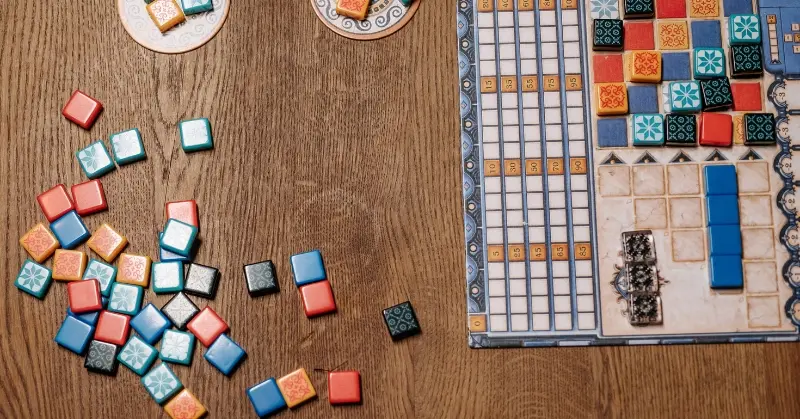When you’re creating a board game, your goal is simple: design something people love to play. But what makes a game successful isn’t just its artwork, components, or even rules—it’s whether the game speaks directly to the right kind of player. That’s where understanding board game genres becomes essential.
Genres aren’t just labels—they’re powerful tools that help define expectations, guide mechanics, and shape marketing. If you want your game to get noticed, resonate with players, and ultimately succeed, you need to know where it fits in the genre landscape.
Why Genres Matter to You
The moment a player picks up a game, they’re looking for a specific experience. Whether it’s the tension of deduction, the thrill of strategy, or the fun of party play, genres set the tone. By clearly defining your genre, you’re signaling to potential players: “This is the type of fun you’ll get.”
If your game fits cleanly within a well-understood genre, it becomes easier for retailers to stock it, reviewers to talk about it, and players to share it. On Kickstarter or in stores, games with a strong genre identity stand out—and sell more.
Midway Through Development: Lock in Your Board Game Genres
It’s tempting to throw everything you love into one game. But without a clear genre focus, you risk creating a mix that confuses rather than excites. Identifying your board game genres during the middle stage of development (not too early, not too late) helps solidify mechanics, player goals, and emotional tone.
For instance:
- Worker placement mechanics suit euro-style strategy games.
- Bluffing belongs in social deduction games.
- Real-time play thrives in party or co-op challenges.
This genre-mechanic harmony creates intuitive, fun gameplay that “just feels right” to players.
Genre Breakdown: Choosing the Right Fit
Here are some key genres and what they typically offer:
- Euro Games – Low luck, high strategy. Ideal for gamers who enjoy efficiency and long-term planning.
- Ameritrash (Thematic Games) – Heavy on theme and narrative, often with miniatures and combat. Great for players who love story-driven adventures.
- Deck Builders – Focus on constructing personal card engines. Excellent for players who enjoy optimization.
- Party Games – Easy to learn, fun in groups. Perfect for casual social settings.
- Co-ops – Players vs. the game. Ideal for collaborative problem solvers.
- Abstract Strategy – Minimal theme, pure tactics. Appeals to chess-like minds.
- Social Deduction – Hidden roles and deception. Loved by fans of tension and trickery.
- Legacy Games – Evolving campaigns with permanent changes. Engaging for long-term playgroups.
Knowing these categories lets you align your design choices and marketing message.
Benefits of a Genre-Focused Game
- Easier Pitching & Marketing
- Distributors and backers understand what they’re buying.
- You can clearly position your game alongside competitors or within trends.
- Distributors and backers understand what they’re buying.
- Improved Player Experience
- Clear mechanics that align with expectations reduce the learning curve.
- The emotional payoff matches the genre promise (excitement, tension, laughter, etc.).
- Clear mechanics that align with expectations reduce the learning curve.
- Simplified Component Choices
- Genre influences art, board size, and component type. For example, thematic games might need miniatures, while euro games lean on wooden meeples and player boards.
- Genre influences art, board size, and component type. For example, thematic games might need miniatures, while euro games lean on wooden meeples and player boards.
- Better Crowdfunding Outcomes
- Kickstarter campaigns with clear genre identities attract targeted backers who are more likely to convert and stick around.
- Kickstarter campaigns with clear genre identities attract targeted backers who are more likely to convert and stick around.
What to Avoid
- Genre Confusion – Mixing genres without cohesion can alienate players. If your game is half-party and half-tactical, it might end up being neither.
- Ignoring Genre Tropes – Bucking trends is okay—but only if you deeply understand them. Don’t reinvent without purpose.
- Misleading Marketing – Calling your game a strategy game when it’s mostly random luck leads to poor reviews and refund requests.
Genre Trends to Watch
Staying on top of genre trends gives your project a competitive edge. Here are a few worth noting:
- Hybrid Games – Combining euro mechanics with thematic flair.
- Solo-Friendly Designs – Especially post-2020, solo play is a hot demand.
- Campaign & Legacy Games – People are investing more in games that evolve over time.
- Quick-Fire Party Games – These are especially popular on social media for short, sharable play sessions.
Keep these in mind during prototyping or when preparing your crowdfunding campaign.
Summary: Make Genre Work for You
To make a successful board game, you need more than a good idea—you need alignment. Align your mechanics, components, story, and art with a genre that connects with your target audience.
Key Steps to Take:
- Identify your genre early in development.
- Match components and mechanics to that genre.
- Use your genre to shape your marketing, rulebook, and visual presentation.
- Avoid mixing genres without clear purpose.
- Stay aware of evolving genre trends to adapt your product offering.
By treating board game genres as your compass, you’re far more likely to chart a course to success. And in a crowded market, clarity and focus are the most powerful tools in your toolkit.






